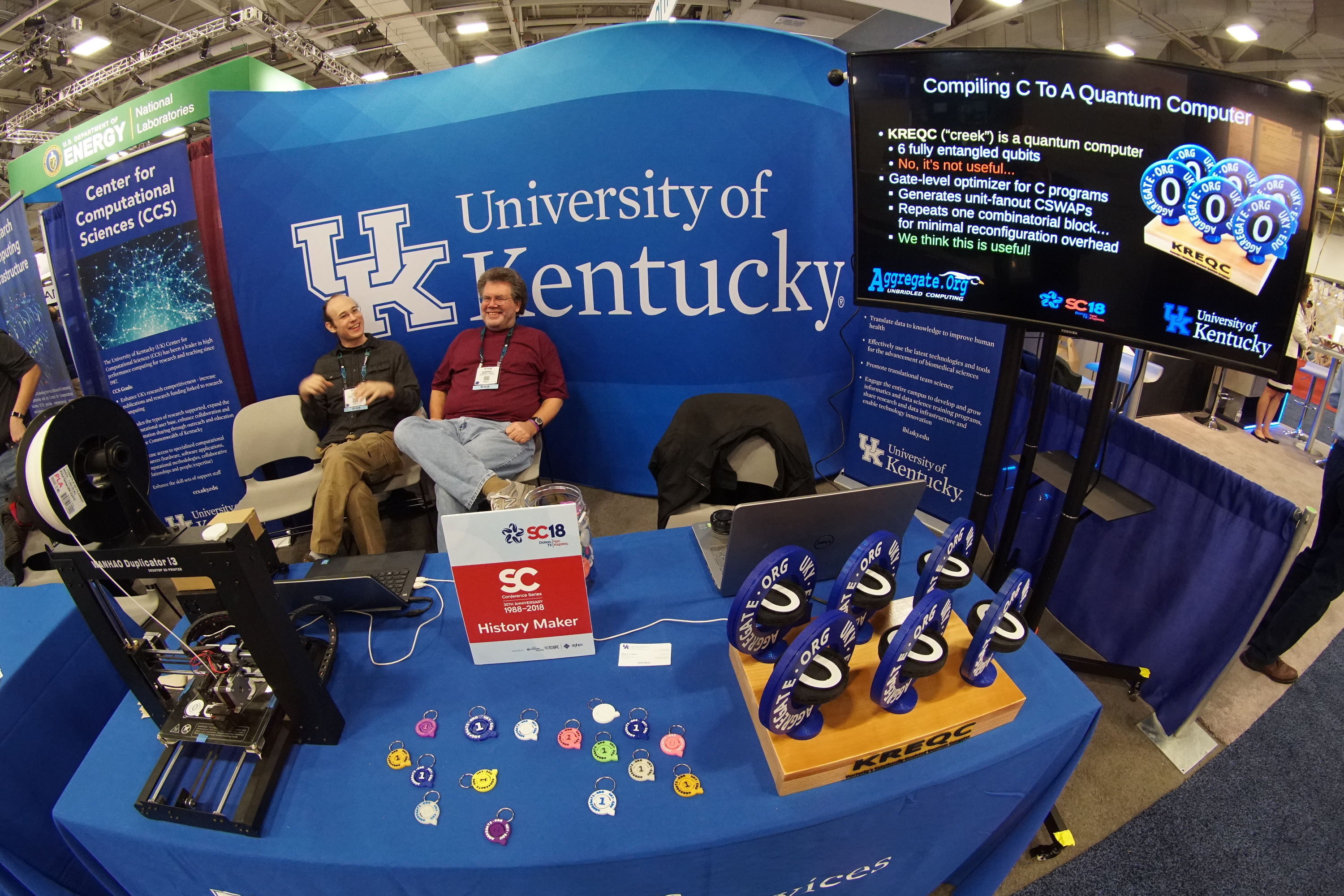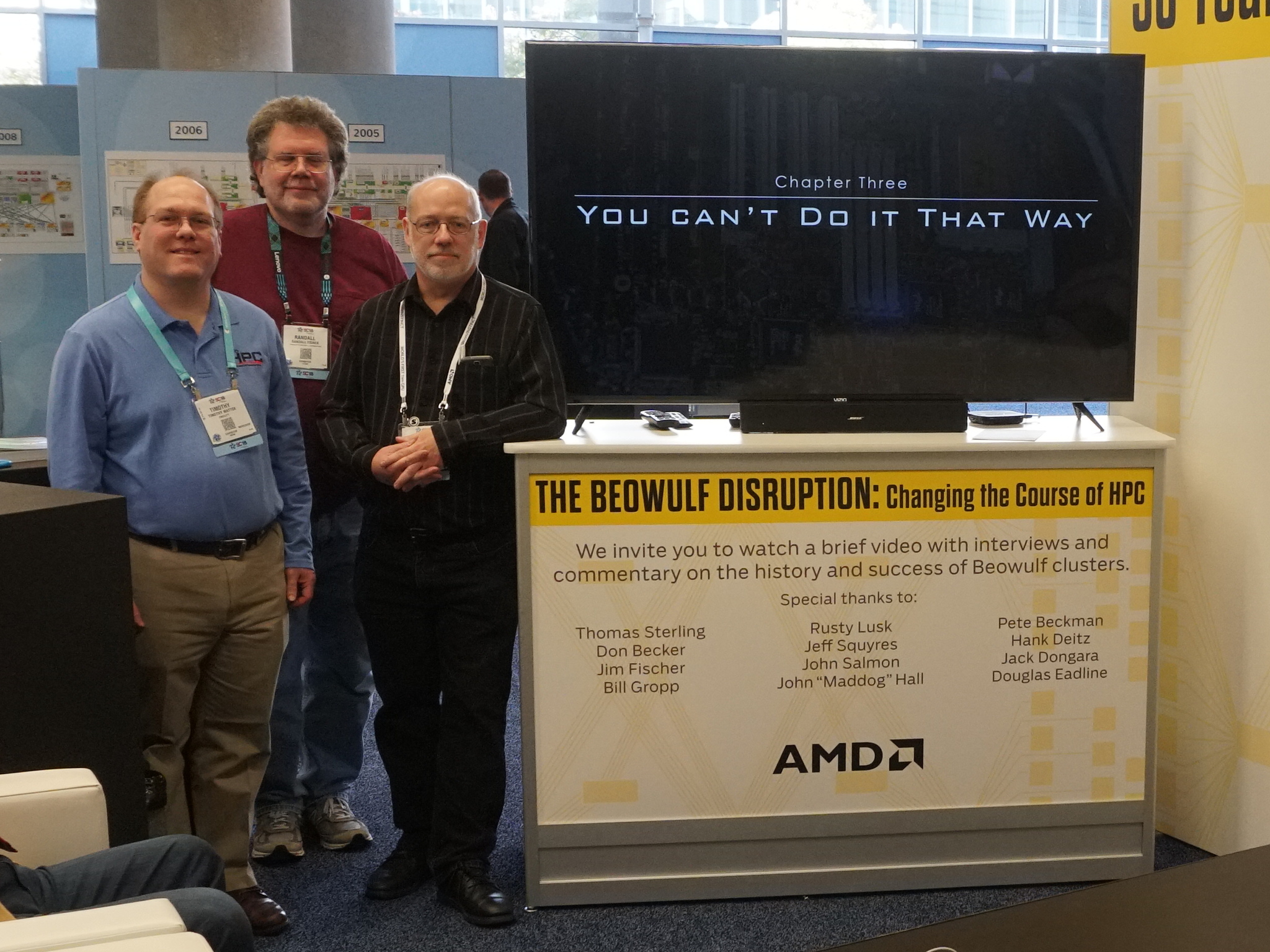
This is the home page for our 25th major research exhibit at the IEEE/ACM Supercomputing conference. The exhibit is again under the slightly changed title University of Kentucky / Aggregate.Org, reflecting the fact that it is now officially led by the Center for Computational Sciences. Of course, the informal research consortium led by our KAOS (Compilers, Hardware Architectures, and Operating Systems) group here at the University of Kentucky's Department of Electrical and Computer Engineering still has a large fraction (ok, most) of the materials in the booth. We are booth #2938, a 10x20 booth.
We've contributed many materials to the 30th SC history collection... so we're not really presenting any of the old (even ongoing old) research in our exhibit this year.
Very unusual for us, but we're really talking primarily about just one thing this year: gate-level optimization of complete programs. It's mostly compiler technology, but the key idea is that it allows you to reduce power consumption, and execution time, by removing unnecessary operations that are not visible to analysis at the word-level. For example, we now have a prototype compiler that can compile a subset of C code into a gate-level specification using unit-fanout CSWAP gates -- so conventional C code could run on a quantum computer!
There are two papers that we've published that give a good overview of the new work:
Here's a photo of the Aggregate.Org exhibit, clearly showing our 3D printer, some 3D-printed qubits, and a working quantum computer:

Yes, our exhibit actually had a quantum computer with six fully-entangled qubits running at room temperature with a cycle time of about 1/2s. At an IBM briefing, we were told that their quantum systems ran with a 1ms cycle, which sounds faster than our 500ms cycle, but the IBM system is in fact slower because they need to sample 1000 times to get a reliable reading, whereas our system is essentially 100% reliable -- with no significant possibility of noise corrupting the output.
Of course, we are not claiming our quantum machine is useful as a computing device. However, KREQC (Kentucky's Rotationally Emulated Quantum Computer, pronounced "Creek") provides a very easy to understand demonstration of how quantum computers really behave... as opposed to a physics-heavy explanation of what mechanism they use to behave. The mechanism used in KREQC is very macroscopic: each 3D-printed qubit contains a servo which can rotate the qubit core as commanded by a small controller mounted under the wooden base, and that controller can be programmed via a conventional computer connected by a USB cable.
There were (well, at least pieces of) three quantum computers on the SC18 exhibit floor. From left to right: IBM Q, D-Wave, KREQC.
Click on the KREQC image to see a video of it computing the answer to the ultimate question....
We've bee doing it pretty much every year -- a low-resolution fisheye timelapse video. This is really just a small portion of the last day due to camera problems, but it's still cute....

I'm honored to be in the 25th anniversary Beowulf video, and it's cool to have former students Tim Mattox and Randy Fisher (who played major roles in building the first systems) here too. Nice title that happened to be on the video when this photo was taken. Maybe for the 30th anniversary video they'll spell my name right.
Are website updates ever done?